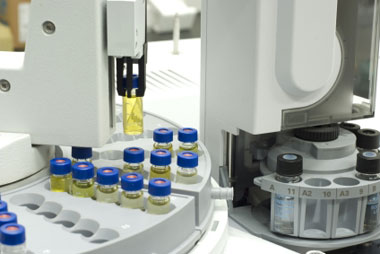Laboratory Testing Services
Contract Method Development/Validation
 Since our inception in 2004, Medipharm's scientists have developed and validated over 200 multiple chromatographic and spectroscopic assays and dissolution methods for our clients, ensuring that the method produces data of acceptable quality according to typical method validation parameters.
Since our inception in 2004, Medipharm's scientists have developed and validated over 200 multiple chromatographic and spectroscopic assays and dissolution methods for our clients, ensuring that the method produces data of acceptable quality according to typical method validation parameters.
Our laboratory can develop and validate any chromatographic (HPLC or GC/FID), spectroscopic (atomic absorption, Infrared or UV/Vis), or titrimetric method to analyze your raw material or finished product according to the general parameters recommended in the United States Pharmacopeia (USP) or in the International Conference of Harmonization (ICH).
Our validation procedures provide a high degree of assurance that every step, process, and change will consistently produce a product meeting its pre-determined specifications and quality attributes.
We can design a protocol to satisfy your intended purpose or requirements, or implement protocols for validation supplied by your staff. Medipharm can refine or modify existing methods to better meet your analytical requirements and validate them if necessary to ensure compliance with your particular study objectives.
Typical analytical characteristics used in method validation:
-
Accuracy: the closeness of test results obtained by an analytical procedure to the true value.
-
Precision: the degree of agreement among individual test results when the procedure is applied repeatedly to multiple samplings of a homogeneous sample
-
Specificity: the unambiguous assessment of the analyte in the presence of components that may be expected to be present, such as impurities, degradation products, and matrix components
-
Limit of Detection: the lowest amount of analyte in a sample that can be detected, but not necessarily quantitated, under the stated experimental conditions
-
Limit of Quantitation: the lowest amount of analyte in a sample that can be determined with acceptable precision and accuracy under the stated experimental conditions
-
Linearity: the ability of an analytical procedure to elicit test results that are directly, or by a well-defined mathematical transformation, proportional to the concentration of analyte in samples within a given range
-
Range: the interval between the upper and lower levels of analyte (including these levels) that have been demonstrated to be determined with a suitable level of precision, accuracy, and linearity using the procedure as written
-
Robustness: a measure of the capacity of an analytical procedure to remain unaffected by small but deliberate variations in procedural parameters listed in the procedure documentation and provides an indication of its suitability during normal usage
-
Ruggedness: intermediate precision specifiying within-laboratory variation, as on different days, or with different analysts or equipment within the same laboratory